Monday
Featured StoriesRecapping the Rinchen Terdzo in Orissa, India
The Rinchen Terdzo concluded on March 4th after three months of empowerments. This article is a digest of what happened during the Rinchen Terdzo, bestowed by His Eminence Namkha Drimed Rinpoche upon Sakyong Mipham Rinpoche in Orissa, India.
What is the Rinchen Terdzo?
The Rinchen Terdzo, or Precious Treasury of Termas, is a collection of approximately 900 treasures, teachings concealed by one great master such as Padmasambhava to be discovered in the future by another great teacher, when such teachings will be most needed. The Shambhala teachings discovered by Chogyam Trungpa Rinpoche are terma. The Rinchen Terdzo was assembled by the 19th century teacher Jamgon Kongtrul Lodro Thaye. It took 33 years to create and is comprised of essential Nyingma practices discovered as terma between the 11th and 19th centuries.
The Rinchen Terdzo, organized by Jamgon Kongtul and his student the 15th Karmapa into a rich and detailed outline, presents many of the most important empowerments in the Nyingma tradition, the oldest of the four schools of Tibetan vajrayana. Receiving the Rinchen Terdzo is a three-month experiential journey from the entrance into the vajrayana path all the way to its fruition. Along the way, the practitioner is taken through all aspects of how to generate and stabilize the mind of enlightenment. On paper it is not easy to convey that the Rinchen Terdzo is a living transmission. The Sakyong remarked that in his 22 years of coming to Asia he has never experienced such a wonderful situation for practice.
Rinchen Terdzo and Shambhala
Up until last summer most of what I knew about the Rinchen Terdzo came from reading Born In Tibet, Chogyam Trungpa Rinpoche’s account of his early life in Tibet and escape to India. The Rinchen Terdzo appears on many pages of the chapters about his youth. Apart from these details and the obvious connection to the mind and training of Trungpa Rinpoche, I was excited to go to India to experience the Rinchen Terdzo myself and understand more of its importance both to the Sakyong and Shambhala.
The Rinchen Terdzo represents one of the major jewels inherited from Chogyam Trungpa Rinpoche. Trungpa Rinpoche said the collection contained all the wisdom held by his predecessor, the 10th Trungpa. The practices presented in it, both historically and in their sequence as an intricate presentation of the path, represent the heart of the Nyingma tradition. All of the schools of Tibetan Buddhism, as well as Tibet’s indigenous Bon religion, have teachings contained in the collection. With respect to the Shambhala terma, the Rinchen Terdzo is a presentation of the vital ancestral tradition from which the Shambhala teachings have emerged.
Lineage of the Rinchen Terdzo to Chogyam Trungpa Rinpoche
The Vidyadhara received the Rinchen Terdzo from his teacher, Jamgon Kongtrul of Shechen, a rebirth of Jamgon Kongtrul Lodro Thaye. He bestowed the Rinchen Terdzo twice in Tibet, the first time when he was 14 years old. This was an extraordinary feat because of the effort and mental stability required to prepare and then bestow the hundreds of empowerments in the collection day after day for three or four months. The second and last time Chogyam Trungpa Rinpoche gave the transmission he was eighteen; it was the last formal teaching he gave before beginning his escape to India. During this transmission, he empowered His Eminence Namkha Drimed Rinpoche as a primary holder of the Rinchen Terdzo tradition. His Eminence is likely the only remaining holder of Chogyam Trungpa Rinpoche’s lineage of this precious collection of teachings. It is both wondrous and fortunate that the empowerments could be bestowed by His Eminence upon Sakyong Mipham Rinpoche, Trungpa Rinpoche’s son and lineage heir.
Rinchen Terdzo in Orissa, India
Padmasambhava Vihar, formerly known as Rigon Thupten Mindrolling, is Namkha Drimed Rinpoche’s monastery in Orissa, India. The site for the Rinchen Terdzo, this monastery is located in the middle of the Indian state of Orissa, in an isolated, hilly region several hours drive from the eastern coast. The monastery is part of a series of five camps, little villages, that are home to a small but thriving Tibetan community that settled there with Namkha Drimed Rinpoche 35 years ago. In the wintertime, the land used to raise corn after the summer monsoons, is dry and hard. We saw no rain and hardly a cloud during the 95 days we spent in Orissa. Most of us were drinking four or more liters of water a day. The sun was so bright that by midday it was often overwhelming to be outside for more than ten or twenty minutes. The huge and airy main shrine room, however, remained cool and comfortable throughout the event.
Sakyong Mipham Rinpoche, the Sakyong Wangmo and the Shambhala community were the main sponsors for the Rinchen Terdzo. It was a huge effort for the monastery and local community to host such an event. The Tibetan community in Orissa had never before witnessed something on the grand scale of the Rinchen Terdzo. On many occasions Namkha Drimed Rinpoche stressed how important the ceremonies were for the region. Orissa is a major tantric site in India as well as the site where the Kalachakra tantra was first taught by the Buddha to King Indrabhuti, the first dharmaraja of Shambhala. Orissa had not been host to such lengthy, elaborate Buddhist practice for many centuries. The weather was apparently cooler than most years at this time. The three months of gentle weather were said to be a sign that the local deities were happy about what was happening at the monastery.
The daily schedule was demanding, particularly for His Eminence who rose around four in the morning for daily practice before starting preparations for the empowerments around six. For people attending the Rinchen Terdzo, the schedule started around six-thirty when His Eminence’s son, Lhuntrul Rinpoche, began the lungs or reading transmissions. These continued until noon with a one-hour break for breakfast. The reading transmissions were readings of everything not already spoken during empowerments. This is crucial in an oral tradition of realization because it is passes on the speech of the tradition. While an empowerment is essential for starting to do a particular practice, the related lungs are necessary for the continuity of the teaching tradition.
At one o’clock sharp, every day, the empowerments began. It was inspiring to see how a monastery of 400 monks could run like clockwork. His Eminence was incredibly disciplined and everyone fell into place around him without second thought. The empowerments would run for six or seven hours with a short tea break in the middle and a bathroom break sometime thereafter. Tea would usually be no more than ten minutes and was served at everyone’s seat in the breathtakingly colorful, frescoed shrine room. Often we’d finish receiving the empowerments (sometimes fifteen in a day) at seven or eight at night.
Recipients of the Rinchen Terdzo
The foremost recipients of the Rinchen Terdzo empowerments were Sakyong Mipham Rinpoche and Lhuntrul Rinpoche, the youngest son of His Eminence. They were both enthroned as holders of the lineage at the very end of the Rinchen Terdzo. Along with them, three others received the empowerments directly from His Eminence throughout the ceremonies: his son Jigme Rinpoche, his nephew Tulku Kunkyab Rinpoche and the Sakyong Wangmo, Dechen Choying Sangmo, daughter of His Eminence. There was a second tier of recipients, the remaining Ripa family, khenpos and lamas of the community, who would receive the empowerments from the five main recipients as events proceeded during the day. Then, at the very close of the day, the Sakyong along with the other rinpoches, khenpos, lamas and some of the monks would take the day’s empowerment articles, vases and so on, out to the rest of the assembly. Often this would include a feast offering for everyone. The feast food would include such unusual treats as bubblegum and tiny tubs of Indian sugared gelatin.
It was interesting to receive the empowerments in the context of a family lineage, the Ripas. It gave a new context with which to view the family lineage that Chogyam Trungpa Rinpoche established at the center of Shambhala in the west. Interesting too was to witness that the wife and daughters of His Eminence were afforded the same honor and respect given to the lamas and khenpos in the community. It is one of the first times I have seen feminine principle so universally respected in a monastic environment. I recall how refreshing it was to see Tulku Kunkyab Rinpoche hug his cousin, one of the Sakyong Wangmo’s sisters, one morning on the monastery steps amidst a swarm of young monks on their way to breakfast. In the evening after closing chants, the daughters of His Eminence would often stay in the shrine room to spend time chatting and basically nurturing the littlest monks, some of whom were as young as three or four.
To give you some sense of the shrine room and general recipients at the empowerments, there were more than 400 monastics in attendance along with around 400 more Asian and Western lay practitioners. The numbers swelled to approximately 1,000 during the opening of the Rinchen Terdzo and ballooned to 1,400 at the close of the empowerments. The event saw guests from India, Nepal, Bhutan, Japan, and all over Europe as well as North and South America. About five long-term Shambhala students came from Nova Scotia. The Tibetan community in attendance came mostly from the different camps and ranged in age from ten days old to great-grandparents in the community. It was heartening to see a large number of kids and twenty-year olds among the lay recipients of the empowerments.
One of the major gifts I received during the Rinchen Terdzo was a little more understanding of the great teachers of Tibet. Seeing His Eminence on the throne day after day, from dawn till past dusk, for three months gave a small glimpse of the dedication and training that flourished in Tibet during the previous centuries. I saw a bit more of what made Trungpa Rinpoche who he was. This is one of the reasons the Sakyong wanted this transmission, to gather more of what made Trungpa Rinpoche into himself. By the end of the empowerments I found myself thinking how little we have seen and understood of the brilliance and dedication of the teachers of the past. We have often get such incredible treasures handed to us with little thought of what it takes to really be a holder of the teachings. I feel very happy that the Sakyong does understand what it takes to carry the teachings forward, and that he’s been doing his very best to prepare to pass that on to the future Sakyong.
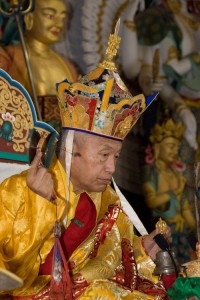
His Eminence Namkha Drimed Rinpoche during the final enthronement, photograph by Christoph Scheonherr
His Eminence Namkha Drimed Rinpoche
His Eminence Namkha Drimed Rinpoche is, I think, a very subtle teacher. I had been attending his teachings in the west trying to get to know him because he seems to be an important feature in the lives of Chogyam Trungpa Rinpoche and Sakyong Mipham Rinpoche. It was not until the Rinchen Terdzo that I understood how thoroughly immersed His Eminence is in the lineage of formal practice and realization. The Sakyong told me that when His Eminence is not practicing he is either reading or writing texts. I think he is very special in this regard; he reminds me of the many great teachers of the past who were one-pointed in their dedication to preserving the transmission of the teachings.
His Eminence seems unusual in contrast to many of the teachers who visit the west. He doesn’t jump out and take hold of you or do anything to pull people in. His teachings seem to radiate through his quiet command and commitment to the practice tradition. He does what needs to be done without fanfare, and with great humility. Sometimes His Eminence would burst into a broad smile or fatherly chuckle for his seat. This would most often occur when members of his family started bumping into one under the thone during a rapid series of empowerments.
As the ceremonies progressed and I settled into the rhythm of receiving the Rinchen Terdzo in Orissa, I began to find Namkha Drimed Rinpoche’s style quite compelling. Though I’d read it many times, I began to pay more attention to the advice about doing one’s best to open up to the teacher as much as possible. I was very sad when the empowerments had concluded, and it was time to say goodbye to Namkha Drimed Rinpoche.
Terma and Empowerments
Both Sakyong Mipham Rinpoche and Jigme Rinpoche met with me throughout the Rinchen Terdzo to give me help and advice. Most if not all of the interesting insights and connections on the blog came from from them or the various books I was using for research while in India. One of the most interesting moments in these interviews came when I asked Jigme Rinpoche why so few of the empowerment rituals in the Rinchen Terdzo were written by the tertons who originally found the termas. This question was important to me because Trungpa Rinpoche didn’t write empowerments for his two most well-known sadhanas, the Sadhana of Mahamudra and the Werma Sadhana,
Jigme Rinpoche explained that in many cases tertons don’t need empowerment rituals because they are so close to the source of the transmission. They are, in a sense, able to give the transmission without the text. This made me think about Chogyam Trungpa Rinpoche and the Shambhala teachings in general, how Trungpa Rinpoche put such emphasis on creating environment, and on how powerful it was to be around him. Jigme Rinpoche went on to explain that it is necessary to write an empowerment later on because a terton’s successor has a different mind. The transmission must be put together in a way so that the lineage is passed on properly. Learning this made me understand much more about why the Sakyong wrote an empowerment for the Werma Sadhana and why His Holiness Dilgo Khyentse Rinpoche wrote an empowerment for the Sadhana of Mahamudra. These two traditions are now preserved for future generations, much like the traditions in the Rinchen Terdzo.
During a final meeting, the Sakyong said that it would be impossible to tell anyone what happened during the Rinchen Terdzo. As I write these words I am smiling because I just spent the last three and a half months trying to tell people what happened. It was an extraordinary event, and it is my aspiration that the Rinchen Terdzo be offered in the west in the not too distant future. Back in early December, after a few days wondering if I would be lost and bored during the empowerments, I learned that being in such an environment was not that different from a dathun or seshin. All one had to do was relax, open up and be curious. I feel that three months spent doing one’s best to open one’s mind and heart to a teacher is time very well spent. As both the Sakyong and Jigme Rinpoche said at one point, “Who wouldn’t want to do this?”
Visit the Rinchen Terdzo Blog
I invite you to visit the Rinchen Terdzo blog. You can read it from the start here, in small doses. Below are selections from the blog. If you click on any of the links you’ll get the story. Navigating back and forth from there will show you photos and give a context for each entry.
This article was written before the final postings on the blog. If you wish to see the final entries and photos, go to the http://www.rinchenterdzo.org and navigate backwards.
Links to the important posts on the Rinchen Terdzo blog:
Formal Opening of the Rinchen Terdzo
The Ceremonial Conclusion of the Rinchen Terdzo
PDF Outline of the Rinchen Terdzo
The Great Stupa and the Rinchen Terdzo
Culture, Enlightened Leadership and the Rinchen Terdzo
General Outline
Reasons to Connect
Shambhala and Mahayoga
The Cycle of Generosity
Offerings to Those Near and Far
From the Sakyong and the Sakyong Wangmo:
New Year’s Letter from Sakyong Mipham Rinpoche
Letter from the Sakyong Wangmo
Breakfast with Their Majesties
Final Letters from the Sakyong and the Sakyong Wangmo
Shambhala Day Letter from the Sakyong
Shambhala Day Letter from the Sakyong Wangmo
Short Talks By His Eminence Drimed Rinpoche:
A Talk By His Eminence Namkha Drimed Rinpoche
Remarks By His Eminence Namkha Drimed Rinpoche
Teachings by Jigme Rinpoche:
Why Now is the Time for Terma
New Year’s Letter
The Ripas and the Trungpas
The Eight Herukas
Terdaks
The Sakyong’s Role
More with Jigme Rinpoche
Shining New Dharma
Yangdak Unseen
Chogyam Trungpa Rinpoche and the Rinchen Terdzo:
Rinchen Terdzo and the Vidyadhara
At Yak Gompa
The Ripas and the Trungpas
Stories of the Kongtruls One
Stories of the Kongtruls Two
The Importance of Lineage
Cultural Moments:
Shadow Play
Shadow Play II
Losar One
Losar Two
Losar Three

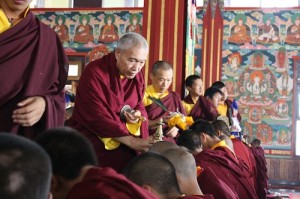
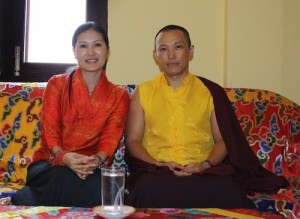
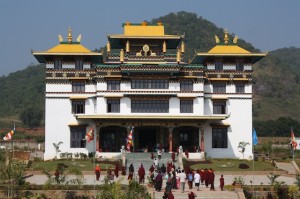
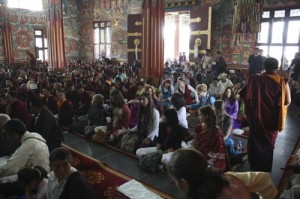
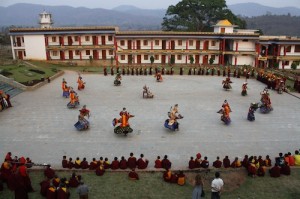
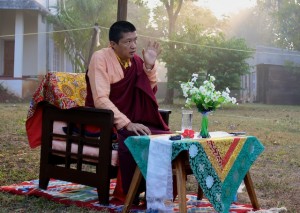




Jul 3, 2011
Reply
Terma is a Tibetan word that literally means “treasure.” It is a form of revelation for Buddhist (and Bon) teachings among Tibetan masters.
Jul 2, 2011
Reply
<>
Sorry, what does it means “terma”? (it is not an english word)
Nov 5, 2010
Reply
Really you are published very nice news. Thanks